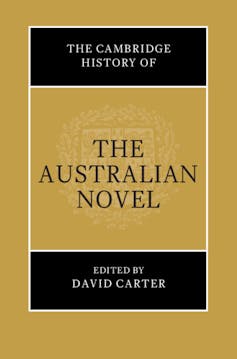'How is the Great Australian Novel going?' Not too bad, thanks
- Written by Nicholas Jose, Professor of English and Creative Writing, University of Adelaide

“How is The Great Australian Novel going?” asks a character in Thea Astley’s The Well Dressed Explorer[1], a Miles Franklin Literary Award winner in 1962.
When the weighty Cambridge History of THE AUSTRALIAN NOVEL[2] (as the title reads on its gold cover) landed on my doorstep I wondered if I would find out. Its editor, David Carter, first among equals as scholar-critic of Australian literature, has assembled 39 essays by leaders in the field, himself included, to chart the journey of the Australian version of this shape-shifting form.
Review: The Cambridge History of the Australian Novel – edited by David Carter (Cambridge University Press)
I have read a lot of Australian novels in my time, and written a few. I decided that if I sat down and read the history from cover to cover with open-minded curiosity, I might see what patterns emerged.
Probably no other reader would do this. The chapters on particular topics within a flexible chronology are designed for standalone use by teachers and students. This is a modular and recursive history, in which the past is revisited through a contemporary lens, with an eye on the future. A master narrative is not desired.
Read more https://theconversation.com/how-is-the-great-australian-novel-going-not-too-bad-thanks-214456

















